Abstract
Untreated male and female BDX rats were observed over a period of 30 months for spontaneous tumours of a size suitable for transplantation. At the age of 13-30 months 60/97 animals developed tumours, 53 of which were considered as malignant, and 7 as benign tumours. The spectrum of malignant tumours included sarcomas of connective tissue and bone, skin carcinomas, tumours of the lung, the gastrointestinal tract, the genito-urinary tract, the mammary glands, the testis, the adrenal glands and also sarcomas of the neural system and malignancies of the lymphoreticular system. Out of 41 tumours implanted s.c., 34 of them could be passaged further. The primary latent period varied between 1 and 12 months.
Full text
PDF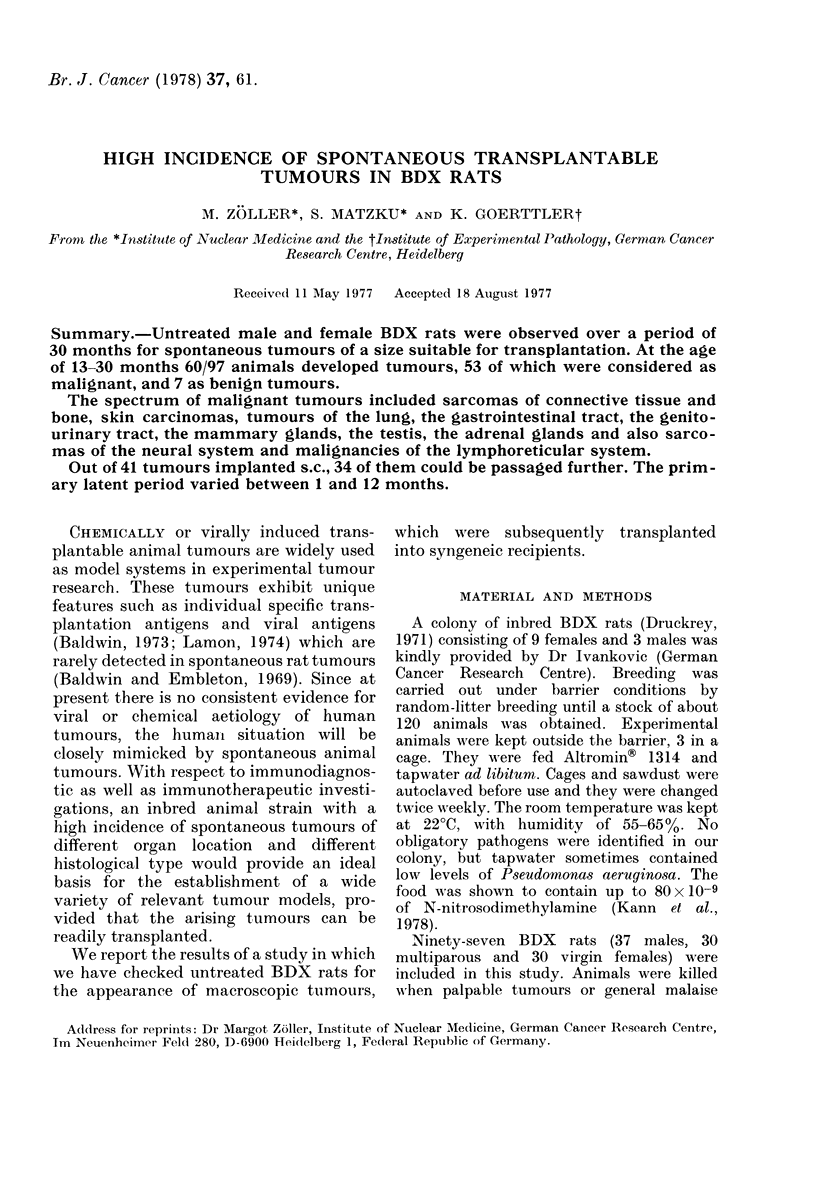
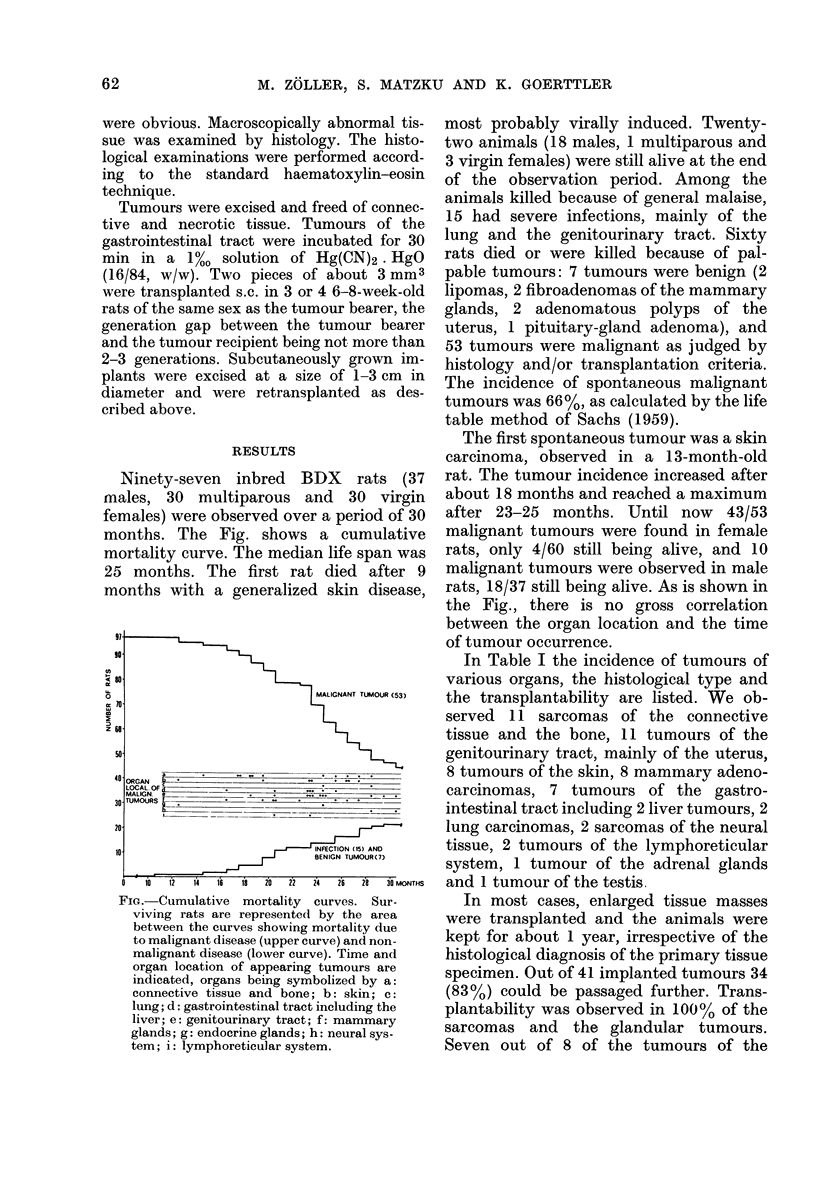
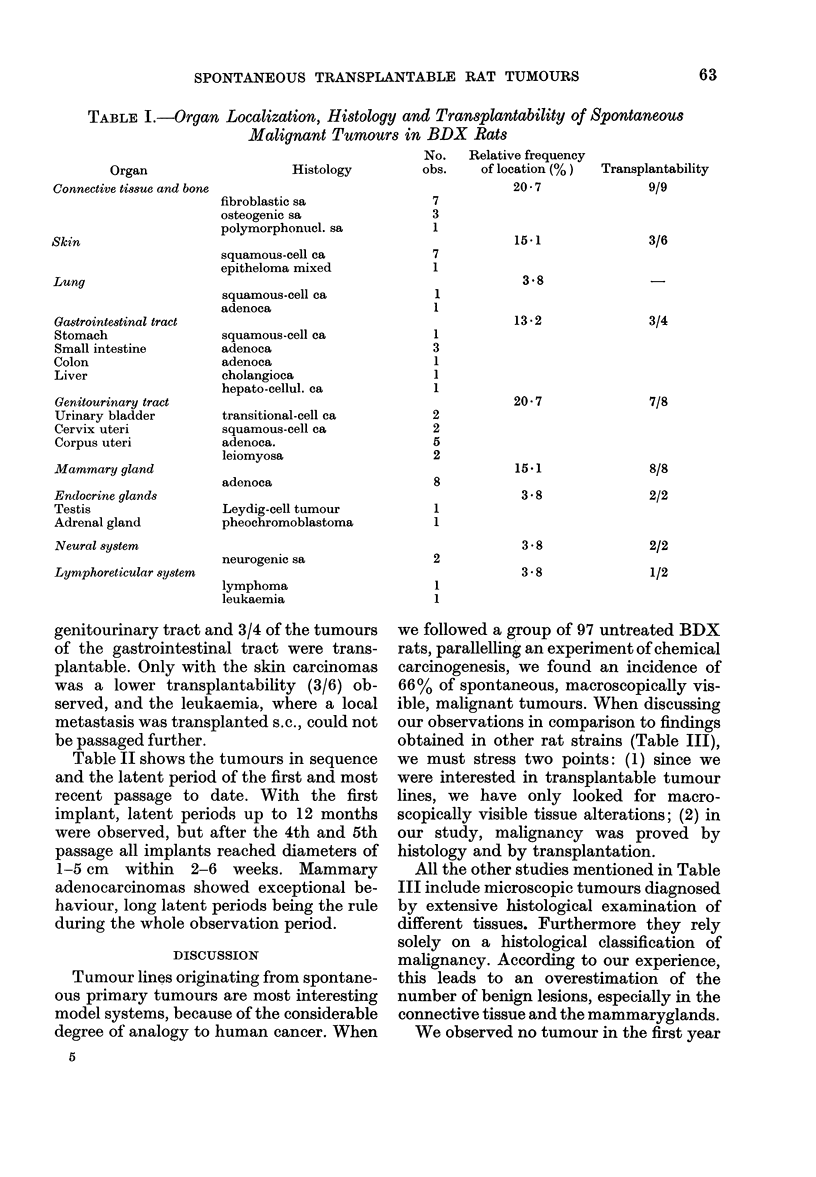
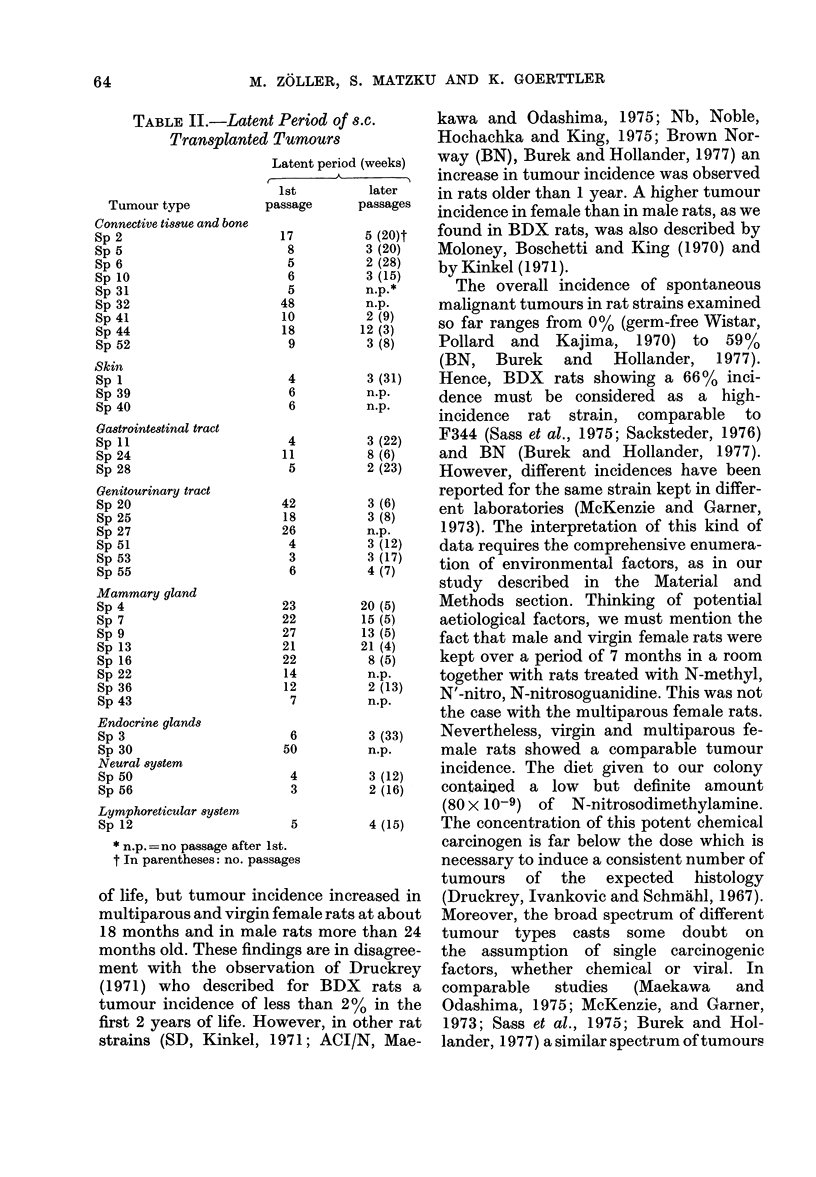
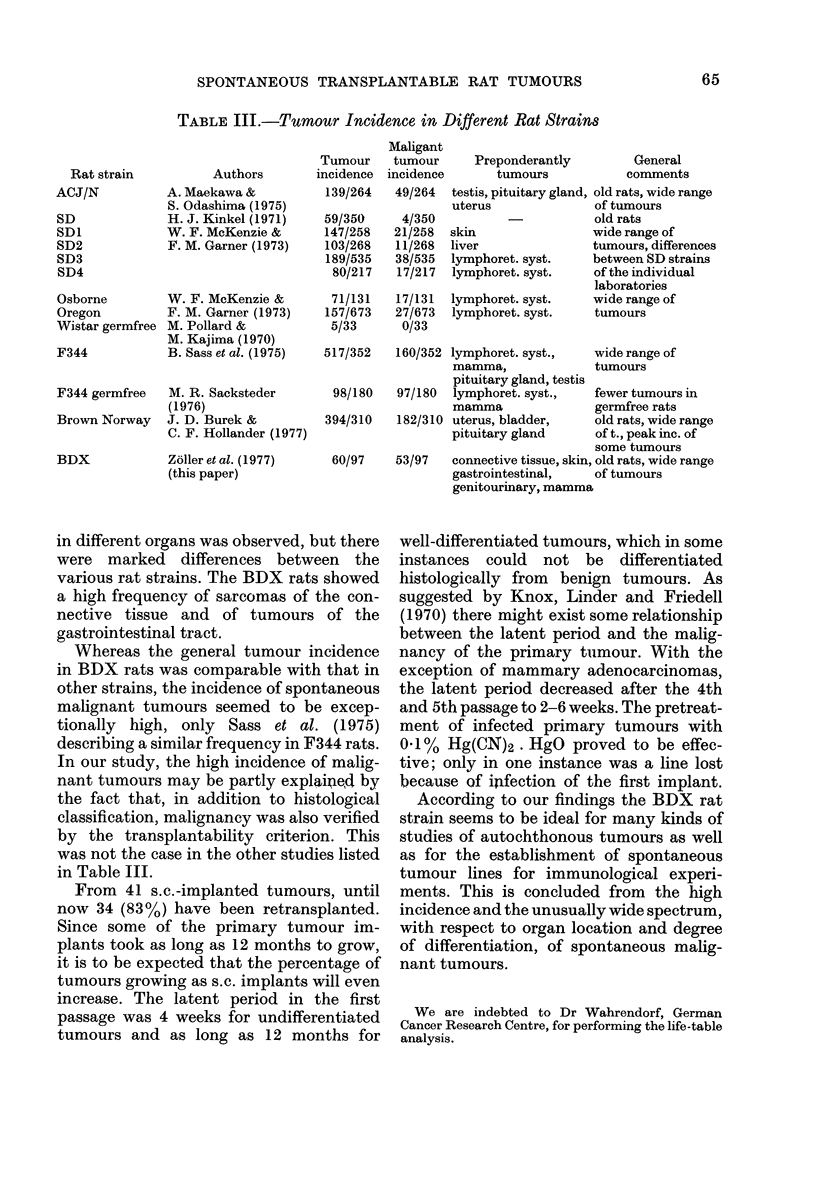
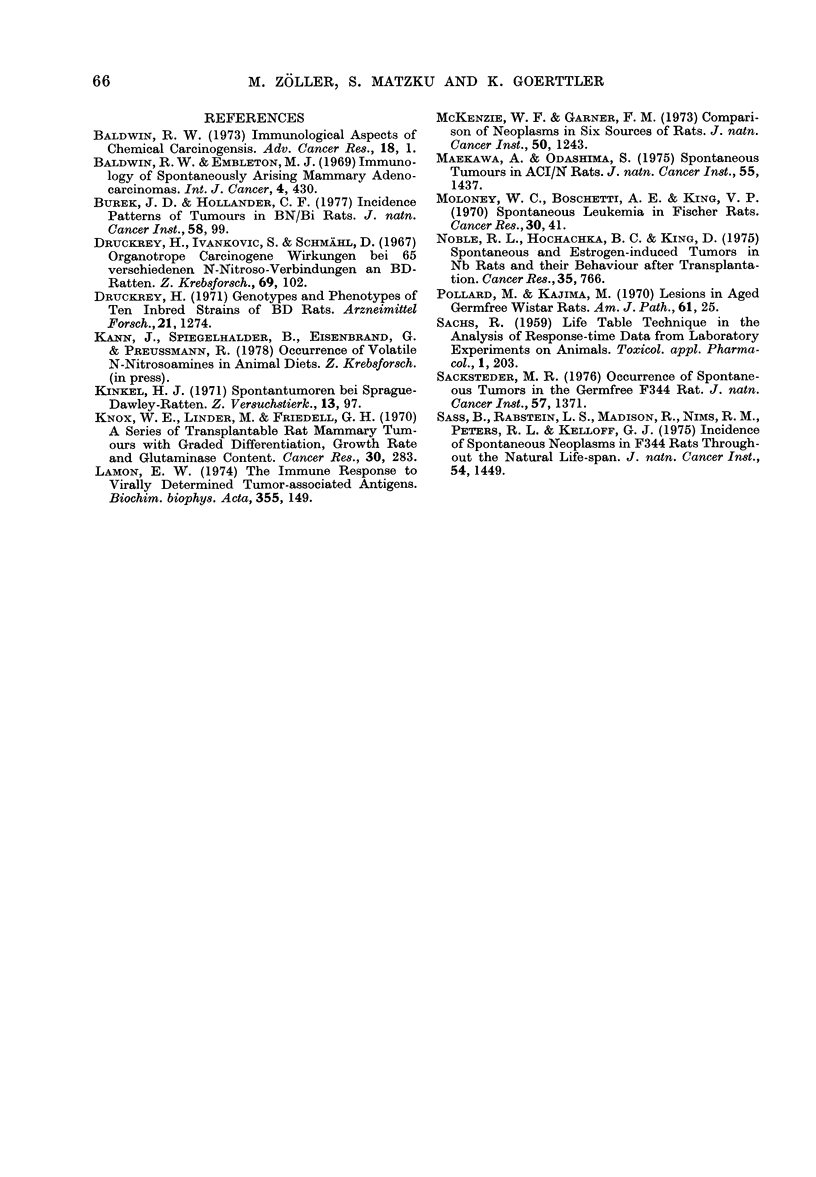
Selected References
These references are in PubMed. This may not be the complete list of references from this article.
- Baldwin R. W., Embleton M. J. Immunology of spontaneously arising rat mammary adenocarcinomas. Int J Cancer. 1969 Jul 15;4(4):430–439. doi: 10.1002/ijc.2910040408. [DOI] [PubMed] [Google Scholar]
- Baldwin R. W. Immunological aspects of chemical carcinogenesis. Adv Cancer Res. 1973;18:1–75. doi: 10.1016/s0065-230x(08)60750-2. [DOI] [PubMed] [Google Scholar]
- Burek J. D., Hollander C. F. Incidence patterns of spontaneous tumors in BN/Bi rats. J Natl Cancer Inst. 1977 Jan;58(1):99–105. doi: 10.1093/jnci/58.1.99. [DOI] [PubMed] [Google Scholar]
- Druckrey H. Genotypes and phenotypes of ten inbred strains of BD-rats. Arzneimittelforschung. 1971 Aug;21(8):1274–1278. [PubMed] [Google Scholar]
- Kinkel H. J. Spontantumoren bei Sprague-Dawley-Ratten. Z Versuchstierkd. 1971;13(2):97–100. [PubMed] [Google Scholar]
- Knox W. E., Linder M., Friedell G. H. A series of transplantable rat mammary tumors with graded differentiation, growth rate, and glutaminase content. Cancer Res. 1970 Feb;30(2):283–287. [PubMed] [Google Scholar]
- Lamon E. W. The immune response to virally determined tumor associated antigens. Biochim Biophys Acta. 1974 Sep 9;355(2):149–176. doi: 10.1016/0304-419x(74)90002-x. [DOI] [PubMed] [Google Scholar]
- Mac Kenzie W. F., Garner F. M. Comparison of neoplasms in six sources of rats. J Natl Cancer Inst. 1973 May;50(5):1243–1257. doi: 10.1093/jnci/50.5.1243. [DOI] [PubMed] [Google Scholar]
- Noble R. L., Hochachka B. C., King D. Spontaneous and estrogen-produced tumors in Nb rats and their behavior after transplantation. Cancer Res. 1975 Mar;35(3):766–780. [PubMed] [Google Scholar]
- Pollard M., Kajima M. Lesions in aged germfree Wistar rats. Am J Pathol. 1970 Oct;61(1):25–36. [PMC free article] [PubMed] [Google Scholar]
- SACHS R. Life table technique in the analysis of response-time data from laboratory experiments on animals. Toxicology. 1959 Mar;1(2):203–227. doi: 10.1016/0041-008x(59)90140-1. [DOI] [PubMed] [Google Scholar]
- Sacksteder M. R. Occurrence of spontaneous tumors in the germfree F344 rat. J Natl Cancer Inst. 1976 Dec;57(6):1371–1373. doi: 10.1093/jnci/57.6.1371. [DOI] [PubMed] [Google Scholar]
- Sass B., Rabstein L. S., Madison R., Nims R. M., Peters R. L., Kelloff G. J. Incidence of spontaneous neoplasms in F344 rats throughout the natural life-span. J Natl Cancer Inst. 1975 Jun;54(6):1449–1456. doi: 10.1093/jnci/54.6.1449. [DOI] [PubMed] [Google Scholar]


